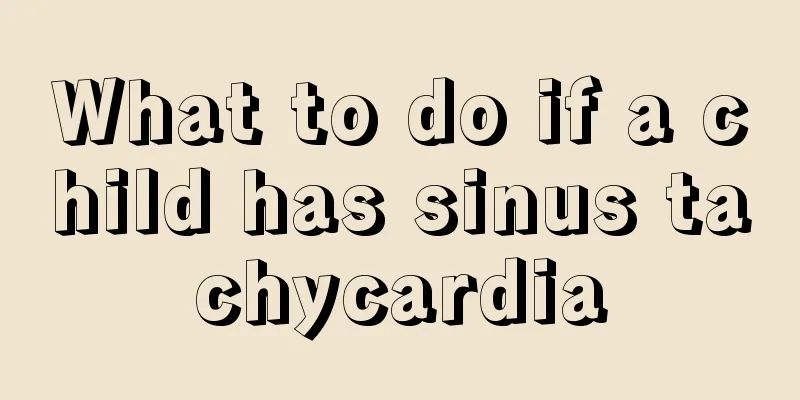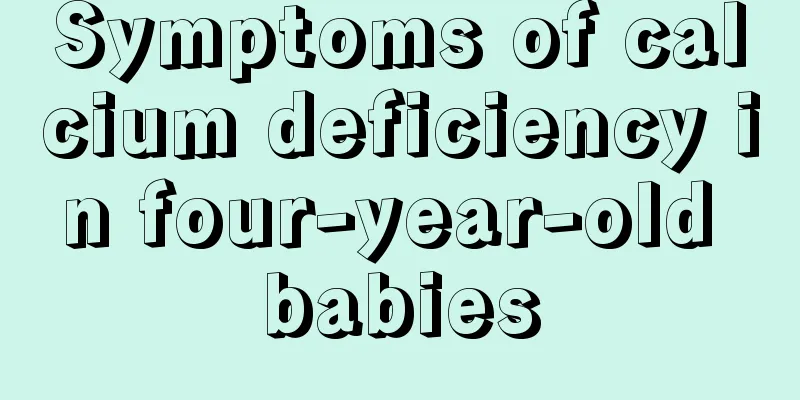What to do if a child has sinus tachycardia

|
Once a child's sinus rhythm is too fast, it can easily cause the child's heartbeat to accelerate. In the long run, the child may also experience shortness of breath. Such a disease has a great impact on the child. Don't ignore it. In the long run, it will also have a great impact on the child's life. This disease is generally caused by congenital factors. So what should children do if they have sinus tachycardia? Many people, especially young people, often receive the diagnosis of "sinus arrhythmia" when they have an electrocardiogram during a physical examination. Most people know that the heartbeat should be regular, so when they hear the term "arrhythmia", many people think it is an abnormal phenomenon. Although there are no symptoms, one still seeks medical treatment and experts everywhere in the hope of curing the "disease" as soon as possible. But doctors often say, "No need for treatment." These people become worried again, wondering if it is some difficult or complicated disease that cannot be cured. In fact, "sinus arrhythmia" is a normal physiological phenomenon, not a disease. "Sinus arrhythmia" is most common in children and adolescents, but is also not uncommon in adults. The beating of a normal human heart is directed by a high-level command center called the sinoatrial node. The sinoatrial node sends signals to stimulate the heart to beat. The heartbeat caused by the signal from the sinoatrial node is called normal "sinus rhythm", with a frequency of about 60-100 beats per minute. This is where the number of heart beats per minute, or heart rate, comes from. But this frequency may be affected by many factors, even breathing. Normally, the heartbeat rhythm is regular. If the heartbeat is irregular, we call it arrhythmia. From this perspective, "sinus arrhythmia" is the most common type of arrhythmia, which is caused by the fact that the signal from the sinoatrial node is not completely regular. However, most of these "arrhythmias" belong to "respiratory sinus arrhythmia", which is a normal physiological phenomenon. Its characteristic is that it changes with breathing. The heart rate may increase by several beats when inhaling and slow down by several beats when exhaling. Its fast and slow cycle is exactly equal to one breathing cycle, and the heart rhythm becomes regular when holding the breath. This "sinus arrhythmia" that changes with breathing is completely normal and there is no need to worry or treat it. When a child suffers from symptoms of sinus tachycardia, you can choose these methods to treat the child. During the period, the child's heartbeat must be controlled, that is, the child's emotions need to be stabilized as much as possible to avoid any stimulation of the child, which is very bad for the child. Let the child read more happy books, so that the child's disease will be better treated. |
<<: What to do if your child has thyroiditis
>>: Treatment of sinus rhythm in children
Recommend
How to tell if a child is okay after a fall
Children's bones are not fully developed yet,...
Oral anti-inflammatory drugs for children's trauma
Anti-inflammatory drugs can cure many abnormal di...
Height and weight standard for 100-day-old babies
The height and weight of a 100-day-old baby shoul...
Causes of neonatal colic
A pregnant mother goes through ten months of hard...
What causes white lips in children?
A healthy child should have rosy lips, but if a c...
Baby's sleep time for 50 days
When a baby is just born, his sleeping pattern is...
Teenagers leg pain knee pain
The bodies of teenagers are in the fastest period...
What are the developmental indicators of a 36-month-old baby?
As we all know, babies already know how to walk a...
What medicine should be used for children's ear inflammation?
Inflammation inside the ear is collectively known...
What to do if baby chokes on milk through nose
Every move of a newborn baby touches the hearts o...
What is the reason for children coughing in the early morning?
Coughing is a very common disease in life. Someti...
One year old baby has bad breath
If a baby over one year old has bad breath, it is...
Will children with lead poisoning always hit their heads?
We all know that when children first learn to wri...
Why do children suddenly keep blinking?
It is a common phenomenon in life that children b...
Hydrocele surgery in children
Hydrocele in children is a disease that many litt...









